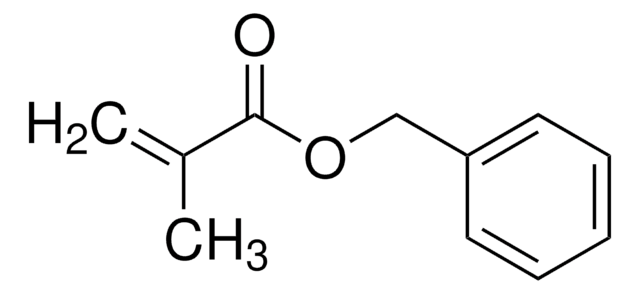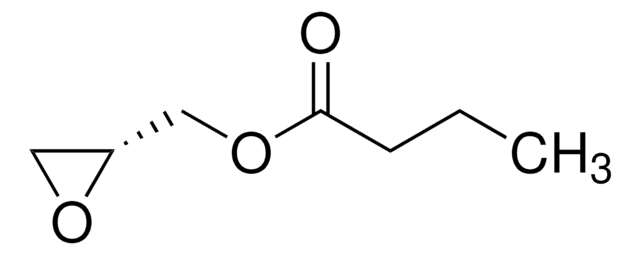151238
Glycidyl methacrylate
97%, contains 100 ppm monomethyl ether hydroquinone as inhibitor
Synonym(s):
2,3-Epoxypropyl methacrylate, Methacrylic acid 2,3-epoxypropyl ester
About This Item
Recommended Products
Quality Level
Assay
97%
form
liquid
contains
100 ppm monomethyl ether hydroquinone as inhibitor
impurities
0.02% epichlorohydrin
refractive index
n20/D 1.449 (lit.)
bp
189 °C (lit.)
density
1.042 g/mL at 25 °C (lit.)
storage temp.
2-8°C
SMILES string
CC(=C)C(=O)OCC1CO1
InChI
1S/C7H10O3/c1-5(2)7(8)10-4-6-3-9-6/h6H,1,3-4H2,2H3
InChI key
VOZRXNHHFUQHIL-UHFFFAOYSA-N
Looking for similar products? Visit Product Comparison Guide
General description
Application
Signal Word
Danger
Hazard Statements
Precautionary Statements
Hazard Classifications
Acute Tox. 3 Dermal - Acute Tox. 4 Oral - Carc. 1B - Eye Dam. 1 - Muta. 2 - Repr. 1B - Skin Corr. 1C - Skin Sens. 1 - STOT RE 1 - STOT SE 3
Target Organs
Respiratory system
Storage Class Code
6.1C - Combustible acute toxic Cat.3 / toxic compounds or compounds which causing chronic effects
WGK
WGK 3
Flash Point(F)
168.8 °F - closed cup
Flash Point(C)
76 °C - closed cup
Choose from one of the most recent versions:
Already Own This Product?
Find documentation for the products that you have recently purchased in the Document Library.
Customers Also Viewed
Our team of scientists has experience in all areas of research including Life Science, Material Science, Chemical Synthesis, Chromatography, Analytical and many others.
Contact Technical Service



